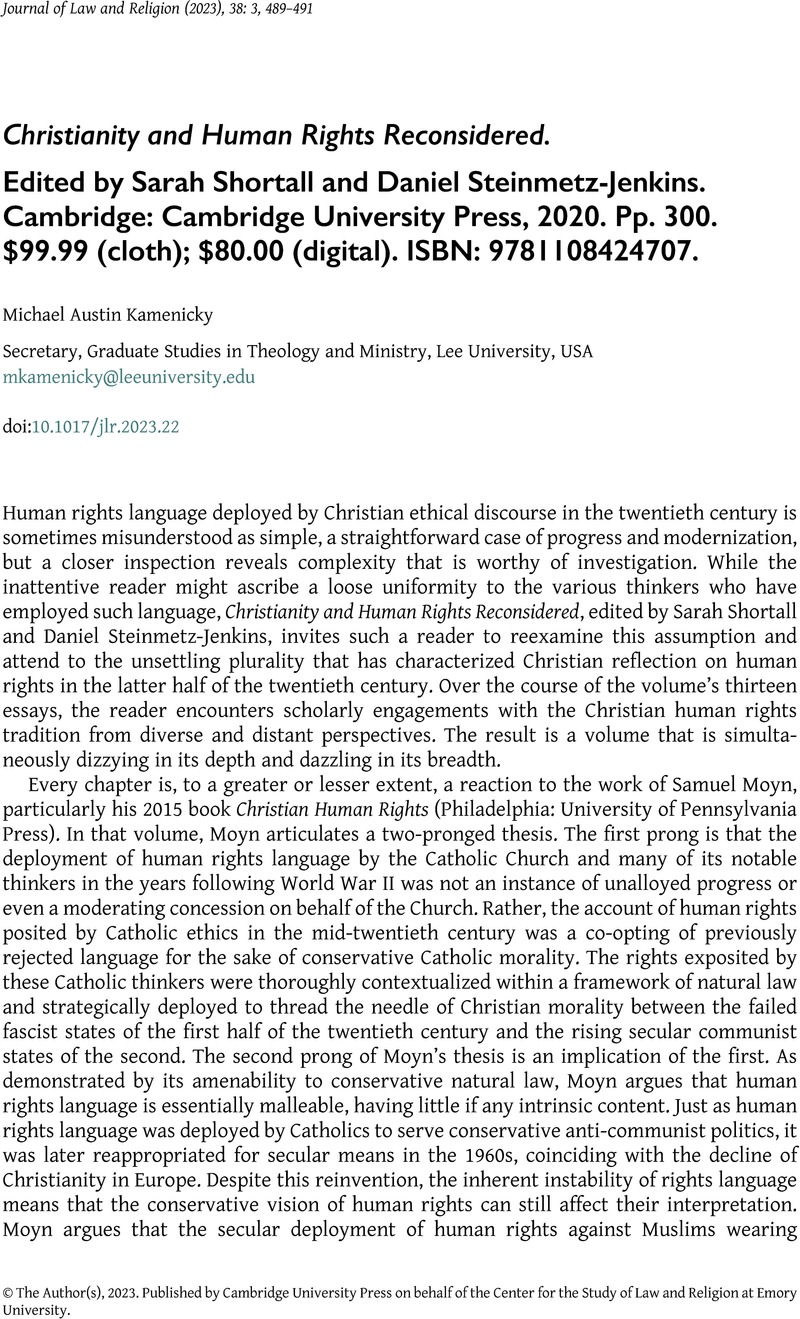No CrossRef data available.
Article contents
Christianity and Human Rights Reconsidered. Edited by Sarah Shortall and Daniel Steinmetz-Jenkins. Cambridge: Cambridge University Press, 2020. Pp. 300. $99.99 (cloth); $80.00 (digital). ISBN: 9781108424707.
Review products
Christianity and Human Rights Reconsidered. Edited by Sarah Shortall and Daniel Steinmetz-Jenkins. Cambridge: Cambridge University Press, 2020. Pp. 300. $99.99 (cloth); $80.00 (digital). ISBN: 9781108424707.
Published online by Cambridge University Press: 09 October 2023
Abstract
An abstract is not available for this content so a preview has been provided. Please use the Get access link above for information on how to access this content.

- Type
- Book Review
- Information
- Copyright
- © The Author(s), 2023. Published by Cambridge University Press on behalf of the Center for the Study of Law and Religion at Emory University



